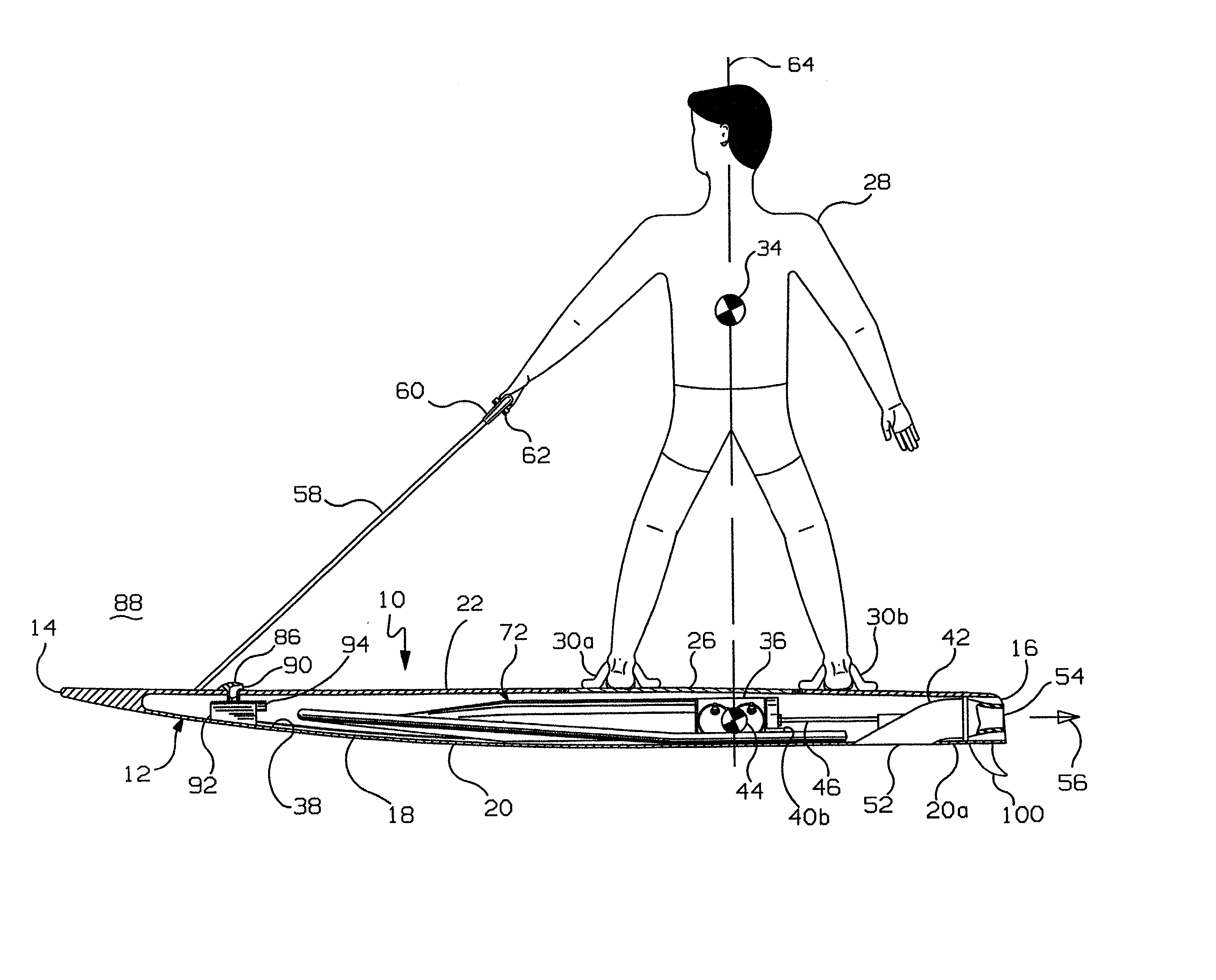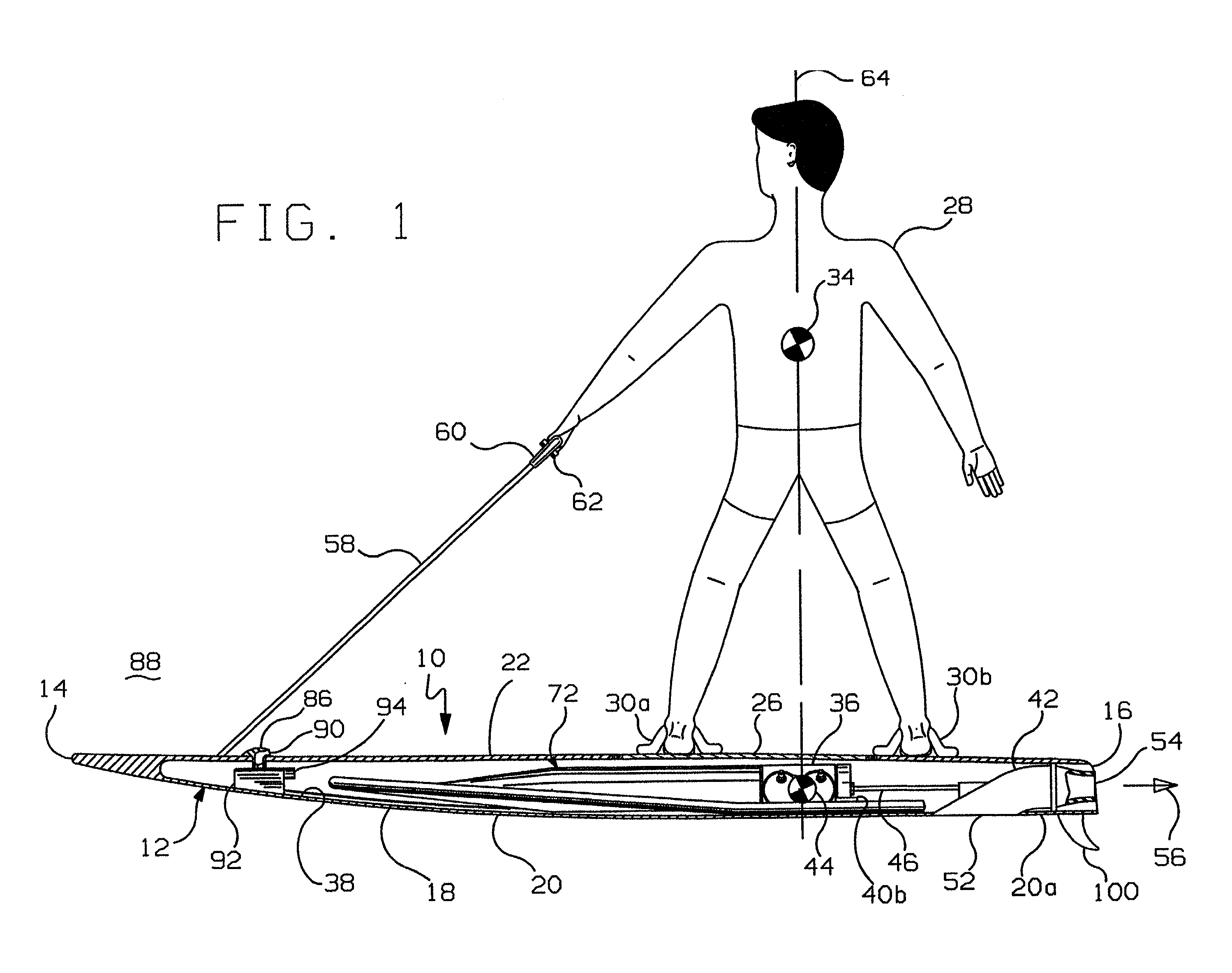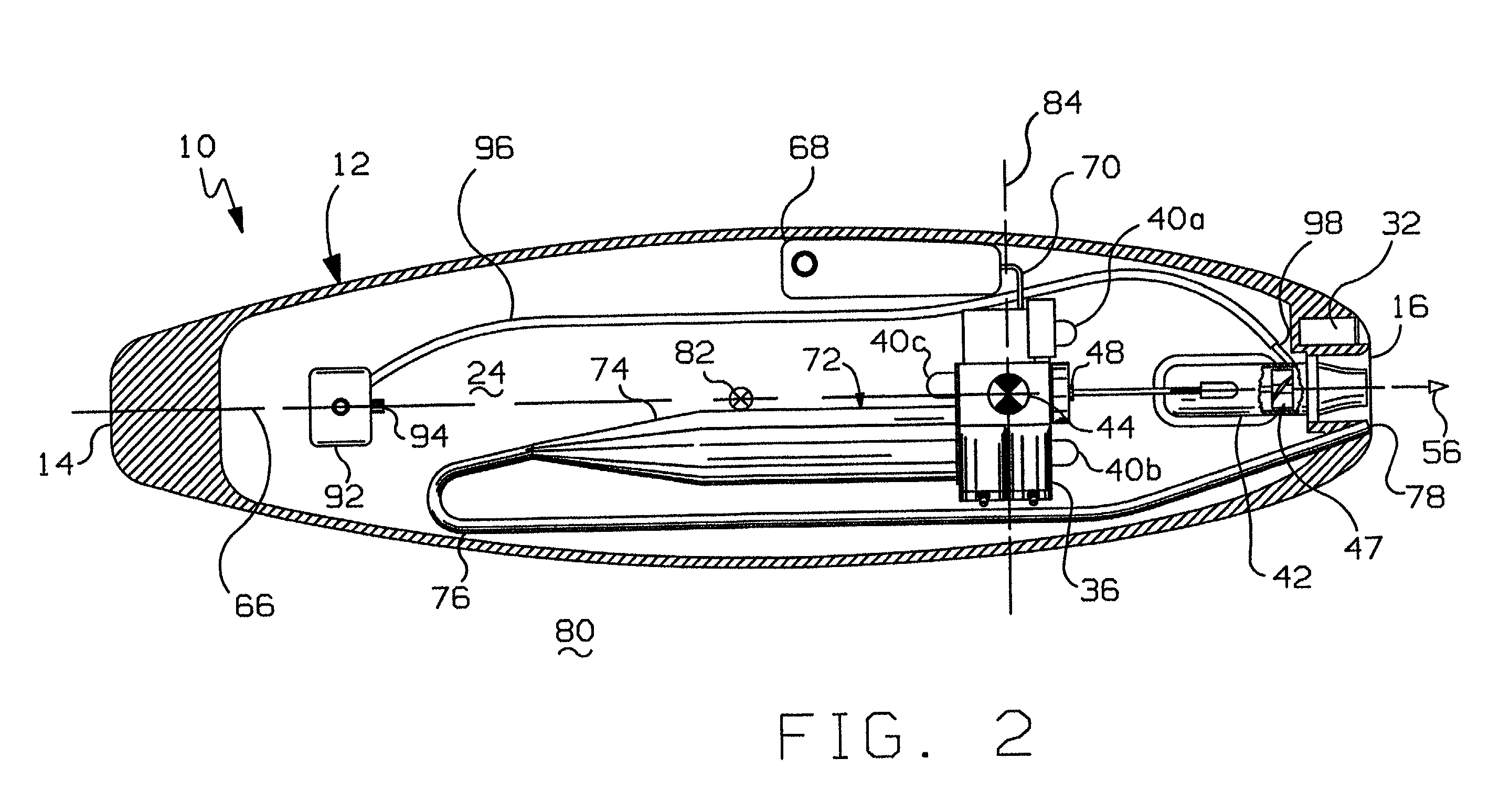The windsurf board, kiteboard and other boards that use the forces of nature to propel them, have the
disadvantage of being dependant on the right weather conditions.
In most locations in the world, there are a very limited number of days a year that users are able to enjoy those sports.
The wakeboard is not dependent on weather conditions, but its
disadvantage is the requirement for a boat to pull the wakeboarder and at least one additional person to operate such boat.
Surfing does not include and is not capable of
jumping above water surface and, therefore, these motorized surfboards did not address the issues related to
jumping.
Many of these motorized boards are not capable of achieving the high speeds necessary to initiate jumps above water surface.
Furthermore, this lack of the ability to control a craft after the craft becomes airborne is extremely hazardous for the rider.
The most difficult and most dangerous part of
jumping is landing.
Consequently, to land safely, the rider cannot be at a mercy of the very
initial phase of the jump, which is the time when the craft leaves water, but rider must be in control during all of the phases of the jump.
All of the motorized boards lack the ability to control them after they become airborne.
For most humans this is neither practical nor possible.
Because moving a stem up and down is a form of rotation about this axis, therefore the high rotational
moment of inertia of the prior art boards has a detrimental effect on the amount of effort a rider has to exert in order to move a stem up and down (also known as rocking) or to control the
angle of attack of the board, both during airborne ascending and descending.
The references discussed above show the engine in a position that does not offer good riding characteristics on water and offer even worse characteristics during jumping.
While some of these references allow for moderately controllable surfing (U.S. Pat. No. 5,582,529 to R. E. Montgomery), none of it will allow executing very difficult and fully controlled jumps above water surface.
This limits the craft to be operated at low speeds only, commonly known as displacement operation.
This is a very hydrodynamically inefficient way of ingesting water, which further limits the output of his propulsion
system.
This feature has two disadvantages: (a) it creates a very large resistance to the
stream of water that floats around it at a very high speed, thus further reduces the propelling thrust, and (b) it loses the
ability to work as a stabilizer and steering feature should rider decide to steer the board with
body balance.
Without a movable part of the fin of the Von-Smagala-Romanov craft, the fin cannot be used to aid in steering, especially in steering with
body balance.
Effective steering by
body balance is only possible at planing speeds.
Furthermore, careful study of Von-Smagala-Romanov device indicates that it is a
low speed craft incapable of becoming airborne by rocking it or by using a wave or wake as a ramp for jump.
This central engine location causes the craft rotational
moment of inertia around
vertical axis that passes through rider center of gravity to be excessively high, thus effectively rendering the craft uncontrollable during the time the craft is airborne.
This high moment of rotational
inertia renders this craft unsuitable for airborne maneuvering.
The Montgomery board, by its shear power of engine, will allow rider to jump above water surface, but because of the requirement for such a high moment to rotate his board, after it loses contact with water the rider also loses most of the control over the craft.
Yet another
disadvantage of the Montgomery craft is that the minimum length of the craft is limited to approximately 2.28 m (7.5 feet).
This creates
package and transportation problems, and makes the look of the board very unappealing.
It is not possible to make the Douglas craft achieve planing speeds because the motorized surfboard of Douglas cannot incorporate a water pump with inlet positioned close to the rear of the board.
Any water pump inlet positioned near the exhaust exit would ingest
exhaust fumes resulting in total loss or large reduction of propelling force.
Therefore, the only possible place for water pump intake is in the central or front portion of the Douglas craft, which as explained before is not suitable for planing speeds.
Therefore, for this craft length, like in the Von-Smagala-Romanov and in the Montgomery crafts, this positions engine is substantially in front of a rider standing on
deck, resulting in a very high moment of rotational
inertia of the craft around
vertical axis that passes through the center of gravity of rider.
Furthermore, careful study of Douglas device indicates that it is a
low speed craft incapable of becoming airborne neither by rocking it by rider nor by using a wave or wake as a ramp for jump.
The Trotet design is a displacement type craft, which can never achieve high planing speeds necessary for jumping above water, without a very large and extremely powerful engine (over 50 hp), not feasible for packaging in this type of a craft.
 Login to View More
Login to View More  Login to View More
Login to View More 


